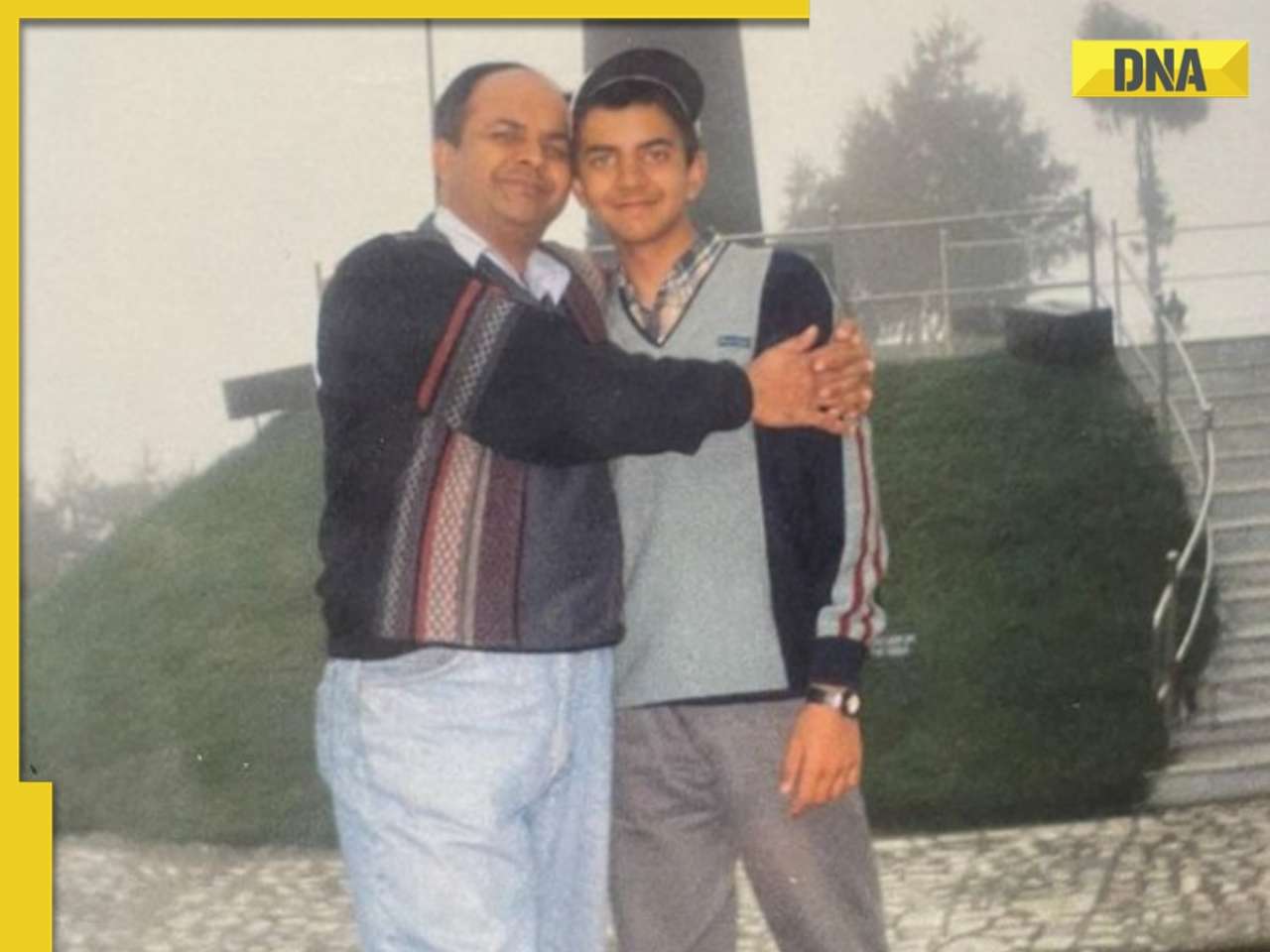Pooja Bhula brings you stunning shots, memories and tips from some of India's award-winning travel photographers
UMEED MISTRY
On a traditional and fresh take on underwater photography

Fondest Memory: On our last day in Sri Lanka, I was 7 km offshore in a sea 6 km deep, when I saw a pod of about 70 sperm whales. They are very smart, can sense you even before you see them and will go away if they feel threatened. With one whip of their tail, they can break your back. But one whale, about 15 m long, came really close and its eyes followed us the entire time. For hearing their ‘kut kut kut’ sound from so close, the experience...there are no words. It’s a joy capturing creatures when they are as curious about me, as I am about them.
Wishlist: I love wildlife, and not merely for photography, so I look forward to events such as the sardine run in South Africa, during which millions of them hug the shore, due to certain currents. As a result, it also attracts predators such as dolphins, whales, sharks and birds.
Personal Philosophy and Tips

Water monitor lizard endemic to the Andamans
> People believe that for underwater photography, you have to dive; but to capture marine life in fresh water it's enough if your camera is submerged and the subject is in water. In fact, I'd won an award, for which I'd taken pictures of frogs, tadpoles and catfish in puddles.
> Before shooting in saltwater bodies, at least complete 30 dives because buoyancy control is a must and monitoring your equipment should be second nature. Else you're likely to damage marine life, and a reef you crash into may take a decade to grow back!
> My years of diving experience helped me as I already knew how to tackle situations in the deep and taught me how light works underwater.
> The undersea has shapes and colours you'll never see on land and the fluidity of water gives pictures an almost art-like feel. But for me the best shots show the animal in all its beauty, while also capturing the fragility of the environment with which it is interacting.
> For those who are into landscape, I'm also trying to show how bringing an element of the underwater into the frame can make it unique.
SANJAY AUSTA
Capturing cultures of the past with cameras of the present

Fondest Memory: I am doing a project on Indian railways for which I travelled on the train’s rooftop from Delhi to Jaisalmer. As there are no steps, people hauled me up. I had expected it to be wobbly, but it’s wasn’t; you can actually sleep on it. It’s illegal and most people don’t have tickets. Music filled the air with people singing away and I also met police recruits. Once my station arrived, like others, even I jumped off the roof! There’s no other way to get off. By the end, I not only got great shots from the top, but also a completely different experience.
Wishlist: I am interested in tribal cultures. People in Papua New Guinea still live like our ancestors did a thousand years ago; going there would be an insight into how we’ve evolved.
Personal Philosophy and Tips

Sherpas apply sunscreen before setting out on a climb to Kanchenjunga
> Photography used to be about skill, but with advanced technology that even allows you to change the focus of pictures after you’ve shot them, to stand out you need to focus on the story.
> I am also a journalist, so I look at photography the same way: I research, make notes about the place, interesting people, look up maps, etc. and decide what I want to document.
> Engaging with the subjects is rewarding, they tell me different stories, point me to interesting people and when shooting, they also make suggestions. But not all communities are happy to be written about or clicked, so you have to hang around and win their trust.
> There’s so much anxiety to capturing ‘that moment’ that we often get the shot, but miss the picture, the experience; so I prefer to observe and take fewer pictures.
DHRITIMAN MUKHERJEE
On spending 300 days in the wild!

Fondest Memory: I’ve been chased by rhinos, elephants and even Himalayan brown bears, but I relish shoots like the one I did in Assam to click ducks. I had observed that everyday around 3 pm, ducks would land in the area near the water hyacinths. So I made myself a hide in the wetland, stood in neck-deep water with my tripod submerged and the lens just above the surface. I was hoping the trick would work. That day, thousands of them surrounded me (some came as close as 3 cm above my head) and even shat on me! From such proximity, the sounds you can hear are so different; this connect with nature made everything worth it.
Wishlist: I love India because it’s a mini-world with all kinds of habitats and hence diverse wildlife. Jim Corbett, Little Rann of Kutch, Ladakh, Thar Desert and Kaziranga are great; and outside so are Namibia, South Africa, Papua New Guinea and Sulawesi islands. My bucket list? South America, the Arctic, Antartica, Bahamas and unexplored parts of Indonesia.
Personal Philosophy and Tips

Old tigress and young tigers in a territorial fight at Ranthambore
> Most people go to the forest and just click what they find, but for good shots you must do your research, understand the animal’s behaviour and plan your shoot, even reinvent shots of animals that have often been clicked. There’s still no guarantee that you’ll get the subject in the right space, in the right light, but it will surely increase the probability.
> To capture wildlife you have to be mentally prepared for several challenges: physical as well as food, water and weather related.
> Be clear about your goals. For me wildlife photography is about contributing to natural history, so I found a lot to explore as most photographers had largely shot only the big animals.
> The equipment will do its job, but first train your mind; appreciate others’ works, don’t compete and compare, there’s no best shot—the same moment will never come again.
![submenu-img]() Anant Raj Ventures into tier 2 and tier 3 cities, pioneering growth in India’s real estate sector
Anant Raj Ventures into tier 2 and tier 3 cities, pioneering growth in India’s real estate sector![submenu-img]() Sophie Turner reveals she wanted to terminate her first pregnancy with Joe Jonas: 'Didn't know if I wanted...'
Sophie Turner reveals she wanted to terminate her first pregnancy with Joe Jonas: 'Didn't know if I wanted...'![submenu-img]() Meet outsider who was given no money for first film, battled depression, now charges Rs 20 crore per film
Meet outsider who was given no money for first film, battled depression, now charges Rs 20 crore per film![submenu-img]() This is owner of most land in India, owns land in every state, total value is Rs...
This is owner of most land in India, owns land in every state, total value is Rs...![submenu-img]() Meet man who built Rs 39832 crore company after quitting high-paying job, his net worth is..
Meet man who built Rs 39832 crore company after quitting high-paying job, his net worth is..![submenu-img]() Meet woman who first worked at TCS, then left SBI job, cracked UPSC exam with AIR...
Meet woman who first worked at TCS, then left SBI job, cracked UPSC exam with AIR...![submenu-img]() Meet engineer, IIT grad who left lucrative job to crack UPSC in 1st attempt, became IAS, married to an IAS, got AIR...
Meet engineer, IIT grad who left lucrative job to crack UPSC in 1st attempt, became IAS, married to an IAS, got AIR...![submenu-img]() Meet Indian woman who after completing engineering directly got job at Amazon, then Google, Microsoft by using just...
Meet Indian woman who after completing engineering directly got job at Amazon, then Google, Microsoft by using just...![submenu-img]() Meet man who is 47, aspires to crack UPSC, has taken 73 Prelims, 43 Mains, Vikas Divyakirti is his...
Meet man who is 47, aspires to crack UPSC, has taken 73 Prelims, 43 Mains, Vikas Divyakirti is his...![submenu-img]() IIT graduate gets job with Rs 100 crore salary package, fired within a year, he is now working as…
IIT graduate gets job with Rs 100 crore salary package, fired within a year, he is now working as…![submenu-img]() DNA Verified: Is CAA an anti-Muslim law? Centre terms news report as 'misleading'
DNA Verified: Is CAA an anti-Muslim law? Centre terms news report as 'misleading'![submenu-img]() DNA Verified: Lok Sabha Elections 2024 to be held on April 19? Know truth behind viral message
DNA Verified: Lok Sabha Elections 2024 to be held on April 19? Know truth behind viral message![submenu-img]() DNA Verified: Modi govt giving students free laptops under 'One Student One Laptop' scheme? Know truth here
DNA Verified: Modi govt giving students free laptops under 'One Student One Laptop' scheme? Know truth here![submenu-img]() DNA Verified: Shah Rukh Khan denies reports of his role in release of India's naval officers from Qatar
DNA Verified: Shah Rukh Khan denies reports of his role in release of India's naval officers from Qatar![submenu-img]() DNA Verified: Is govt providing Rs 1.6 lakh benefit to girls under PM Ladli Laxmi Yojana? Know truth
DNA Verified: Is govt providing Rs 1.6 lakh benefit to girls under PM Ladli Laxmi Yojana? Know truth![submenu-img]() In pics: Taarak Mehta Ka Ooltah Chashmah actress Deepti Sadhwani dazzles in orange at Cannes debut, sets new record
In pics: Taarak Mehta Ka Ooltah Chashmah actress Deepti Sadhwani dazzles in orange at Cannes debut, sets new record![submenu-img]() Ananya Panday stuns in unseen bikini pictures in first post amid breakup reports, fans call it 'Aditya Roy Kapur's loss'
Ananya Panday stuns in unseen bikini pictures in first post amid breakup reports, fans call it 'Aditya Roy Kapur's loss'![submenu-img]() Remember Harsh Lunia? Just Mohabbat child star, here's how former actor looks now, his wife is Bollywood's popular...
Remember Harsh Lunia? Just Mohabbat child star, here's how former actor looks now, his wife is Bollywood's popular...![submenu-img]() Mother's Day 2024: Bollywood supermoms who balance motherhood, acting, and run multi-crore businesses
Mother's Day 2024: Bollywood supermoms who balance motherhood, acting, and run multi-crore businesses![submenu-img]() Rocky Aur Rani's Golu aka Anjali Anand shocks fans with drastic weight loss without gym, says fitness secret is...
Rocky Aur Rani's Golu aka Anjali Anand shocks fans with drastic weight loss without gym, says fitness secret is...![submenu-img]() Haryana Political Crisis: Will 3 independent MLAs support withdrawal impact the present Nayab Saini led-BJP government?
Haryana Political Crisis: Will 3 independent MLAs support withdrawal impact the present Nayab Saini led-BJP government?![submenu-img]() DNA Explainer: Why Harvey Weinstein's rape conviction was overturned, will beleaguered Hollywood mogul get out of jail?
DNA Explainer: Why Harvey Weinstein's rape conviction was overturned, will beleaguered Hollywood mogul get out of jail?![submenu-img]() What is inheritance tax?
What is inheritance tax?![submenu-img]() DNA Explainer: What is cloud seeding which is blamed for wreaking havoc in Dubai?
DNA Explainer: What is cloud seeding which is blamed for wreaking havoc in Dubai?![submenu-img]() DNA Explainer: What is Israel's Arrow-3 defence system used to intercept Iran's missile attack?
DNA Explainer: What is Israel's Arrow-3 defence system used to intercept Iran's missile attack?![submenu-img]() Sophie Turner reveals she wanted to terminate her first pregnancy with Joe Jonas: 'Didn't know if I wanted...'
Sophie Turner reveals she wanted to terminate her first pregnancy with Joe Jonas: 'Didn't know if I wanted...'![submenu-img]() Meet outsider who was given no money for first film, battled depression, now charges Rs 20 crore per film
Meet outsider who was given no money for first film, battled depression, now charges Rs 20 crore per film![submenu-img]() Meet actress who quit high-paying job for films, director replaced her with star kid, had no money, now lives in...
Meet actress who quit high-paying job for films, director replaced her with star kid, had no money, now lives in...![submenu-img]() This star kid's last 3 films lost Rs 5000000000 at box office, has no solo hit in 5 years, now has lost four films to...
This star kid's last 3 films lost Rs 5000000000 at box office, has no solo hit in 5 years, now has lost four films to...![submenu-img]() Meet actress viral for just walking on screen, belongs to royal family, has no solo hit in 15 years, but still is…
Meet actress viral for just walking on screen, belongs to royal family, has no solo hit in 15 years, but still is…![submenu-img]() This is owner of most land in India, owns land in every state, total value is Rs...
This is owner of most land in India, owns land in every state, total value is Rs...![submenu-img]() Blinkit now gives free dhaniya with veggie orders, thanks to Mumbai mom
Blinkit now gives free dhaniya with veggie orders, thanks to Mumbai mom![submenu-img]() Meet man, an Indian who entered NASA's Hall of Fame by hacking, earlier worked on Apple's...
Meet man, an Indian who entered NASA's Hall of Fame by hacking, earlier worked on Apple's...![submenu-img]() 14 majestic lions cross highway in Gujarat's Amreli, video goes viral
14 majestic lions cross highway in Gujarat's Amreli, video goes viral![submenu-img]() Here's why Isha Ambani was not present during Met Gala 2024 red carpet
Here's why Isha Ambani was not present during Met Gala 2024 red carpet






































)













)
)
)
)
)
)




)
)
)
)
)
)